-
Executive Summary
-
Market Introduction
-
2.1
-
Market Definition
-
Scope of the
- Research
- Assumptions & Limitations
-
Study
-
Objectives
-
Markets Structure
-
Key Takeaways
-
3
-
Market Research Methodology
-
Research
-
Process
-
Primary Research
-
Secondary Research
-
3.4
-
Market Size Estimation
-
Forecast Model
-
Market Dynamics of Global Anti-Reflective
-
Coatings Market
-
Introduction
-
Drivers
-
4.3
-
Restraints
-
Opportunities
-
Challenges
-
Trends/Technology
-
Market Factor Analysis of Global Anti-Reflective
-
Coatings Market
-
Supply Chain Analysis
- Raw Substrate Suppliers
- Distributors/Retailers/Wholesalers/E-Commerce
- End User
- Bargaining
- Bargaining Power
- Threat of Substitutes
- Intensity of Competitive Rivalry
-
5.1.2
-
Manufacturers/Producers
-
5.2
-
Porter’s Five Forces Analysis
-
5.2.1
-
Threat of New Entrants
-
Power of Buyers
-
of Suppliers
-
Pricing Analysis
-
Global Anti-Reflective
-
Coatings Market, by Substrate
-
Introduction
- Market
- Market Estimates & Forecast,
-
6.2
-
Glass
-
Estimates & Forecast, 2023-2032
-
by Region, 2023-2032
-
Silicon
- Market Estimates & Forecast, 2023-2032
- Market Estimates & Forecast, by Region, 2023-2032
- Market
- Market Estimates & Forecast,
-
6.4
-
Quartz
-
Estimates & Forecast, 2023-2032
-
by Region, 2023-2032
-
Sapphire
- Market Estimates & Forecast, 2023-2032
- Market Estimates & Forecast, by Region, 2023-2032
- Market Estimates &
-
6.6
-
Plastic
-
6.6.1
-
Market Estimates & Forecast, 2023-2032
-
Forecast, by Region, 2023-2032
-
Others
- Market Estimates & Forecast,
- Market Estimates & Forecast, by Region, 2023-2032
-
Global Anti-Reflective Coatings Market, by Resin
-
7.1
-
Introduction
-
Epoxy
- Market Estimates & Forecast, 2023-2032
-
7.2.2
-
Market Estimates & Forecast, by Region, 2023-2032
-
7.3
-
Polyurethane
-
7.3.1
-
Market Estimates & Forecast, 2023-2032
-
Forecast, by Region, 2023-2032
-
7.5.1
-
Market Estimates & Forecast, 2023-2032
-
& Forecast, by Region, 2023-2032
-
Market Estimates &
-
Acrylic
- Market Estimates & Forecast,
- Market Estimates & Forecast, by Region, 2023-2032
-
Others
- Market Estimates
-
Global Anti-Reflective
-
Coatings Market, by Technology
-
Introduction
- Market Estimates & Forecast, 2023-2032
-
8.2
-
Electronic Beam Evaporation
-
8.2.2
-
Market Estimates & Forecast, by Region, 2023-2032
-
Vacuum
- Market
- Market Estimates & Forecast,
-
Deposition
-
Estimates & Forecast, 2023-2032
-
by Region, 2023-2032
-
Sol-Gel
- Market Estimates & Forecast, 2023-2032
- Market Estimates & Forecast, by Region, 2023-2032
- Market Estimates &
-
8.5
-
Sputtering
-
8.5.1
-
Market Estimates & Forecast, 2023-2032
-
Forecast, by Region, 2023-2032
-
Others
- Market Estimates & Forecast,
- Market Estimates & Forecast, by Region, 2023-2032
-
Global Anti-Reflective Coatings Market, by Application
-
Introduction
-
Eyewear
- Market Estimates
-
9.2.1
-
Market Estimates & Forecast, 2023-2032
-
& Forecast, by Region, 2023-2032
-
Solar Panels
- Market Estimates & Forecast, 2023-2032
- Market
-
Estimates & Forecast, by Region, 2023-2032
-
Automotive
- Market Estimates & Forecast, 2023-2032
- Market
-
Estimates & Forecast, by Region, 2023-2032
-
Building
- Market Estimates & Forecast, 2023-2032
- Market Estimates & Forecast, by Region, 2023-2032
-
and Construction
-
9.5.2.1
-
Architectural Glass
-
9.5.2.2
-
Ceramic Sanitaryware
-
Consumer Goods
- Market Estimates
- Market Estimates & Forecast, 2023-2032
-
9.6.1
-
Market Estimates & Forecast, 2023-2032
-
& Forecast, by Region, 2023-2032
-
9.6.2.1
-
Smartphones
-
Tablets
-
9.7
-
Others
-
9.7.2
-
Market Estimates & Forecast, by Region, 2023-2032
-
10.
-
Global Anti-Reflective Coatings Market, by Region
-
Introduction
-
North America
- Market Estimates
- Market Estimates & Forecast,
- Market Estimates & Forecast,
- Market Estimates & Forecast,
- Market Estimates & Forecast,
- US
- Canada
-
& Forecast, 2023-2032
-
by Substrate, 2023-2032
-
by Resin, 2023-2032
-
by Technology, 2023-2032
-
by Application, 2023-2032
-
Forecast, by Substrate, 2023-2032
-
Forecast, by Technology, 2023-2032
-
by Substrate, 2023-2032
-
10.2.7.3
-
Market Estimates & Forecast, by Resin, 2023-2032
-
Estimates & Forecast, by Application, 2023-2032
-
10.3
-
Europe
-
10.3.4
-
Market Estimates & Forecast, by Technology,
-
Market
-
Market Estimates & Forecast, 2023-2032
-
Market Estimates & Forecast, by Substrate, 2023-2032
-
Market Estimates & Forecast, by Resin, 2023-2032
-
Market Estimates & Forecast, by Technology, 2023-2032
-
10.3.5
-
Market Estimates & Forecast, by Application, 2023-2032
-
10.3.6
-
Germany
-
10.3.6.1
-
Market Estimates & Forecast, 2023-2032
-
Estimates & Forecast, by Resin, 2023-2032
-
& Forecast, by Application, 2023-2032
-
& Forecast, 2023-2032
-
Forecast, by Resin, 2023-2032
-
Forecast, by Application, 2023-2032
-
Forecast, 2023-2032
-
10.3.8.2
-
Market Estimates & Forecast, by Substrate,
-
Market
-
Market Estimates & Forecast, by Technology, 2023-2032
-
Market Estimates
-
France
-
Market Estimates
-
Market Estimates & Forecast, by Substrate, 2023-2032
-
Market Estimates &
-
Market Estimates & Forecast, by Technology, 2023-2032
-
Market Estimates &
-
Italy
-
Market Estimates &
-
Market Estimates & Forecast, by Substrate, 2023-2032
-
by Resin, 2023-2032
-
10.3.8.4
-
Market Estimates & Forecast,
-
Market Estimates & Forecast, by Technology, 2023-2032
-
by Application, 2023-2032
-
Forecast, 2023-2032
-
10.3.9.2
-
Market Estimates & Forecast,
-
Spain
-
Market Estimates &
-
Market Estimates & Forecast, by Substrate,2023-2032
-
by Resin,2023-2032
-
10.3.9.4
-
Market Estimates & Forecast,
-
Market Estimates & Forecast, by Technology,2023-2032
-
by Application, 2023-2032
-
10.3.10.2
-
Market Estimates & Forecast,
-
UK
-
Market Estimates & Forecast,
-
Market Estimates & Forecast, by Substrate,2023-2032
-
Resin,2023-2032
-
10.3.10.4
-
Market Estimates & Forecast, by
-
Market Estimates & Forecast, by Technology,2023-2032
-
by Application, 2023-2032
-
Forecast, 2023-2032
-
10.3.11.2
-
Market Estimates & Forecast,
-
Russia
-
Market Estimates &
-
Market Estimates & Forecast, by Substrate,2023-2032
-
by Resin,2023-2032
-
10.3.11.4
-
Market Estimates & Forecast,
-
Market Estimates & Forecast, by Technology,2023-2032
-
by Application, 2023-2032
-
10.3.12.2
-
Market Estimates & Forecast,
-
Poland
-
Market Estimates & Forecast,
-
Market Estimates & Forecast, by Substrate, 2023-2032
-
Resin, 2023-2032
-
10.3.12.4
-
Market Estimates & Forecast, by
-
Market Estimates & Forecast, by Technology, 2023-2032
-
by Application, 2023-2032
-
& Forecast, 2023-2032
-
& Forecast, by Resin, 2023-2032
-
& Forecast, by Application, 2023-2032
-
10.4.2
-
Market Estimates & Forecast,
-
Rest of Europe
-
Market Estimates
-
Market Estimates & Forecast, by Substrate, 2023-2032
-
Market Estimates
-
Market Estimates & Forecast, by Technology, 2023-2032
-
Market Estimates
-
Asia-Pacific
- Market Estimates & Forecast, 2023-2032
-
Market Estimates & Forecast, by Substrate, 2023-2032
-
10.4.3
-
Market Estimates & Forecast, by Resin, 2023-2032
-
10.4.4
-
Market Estimates & Forecast, by Technology, 2023-2032
-
10.4.5
-
Market Estimates & Forecast, by Application, 2023-2032
-
10.4.6
-
China
-
10.4.6.1
-
Market Estimates & Forecast, 2023-2032
-
10.4.6.3
-
Market Estimates & Forecast, by Substrate,
-
Market Estimates & Forecast, by Resin, 2023-2032
-
Technology, 2023-2032
-
10.4.6.5
-
Market Estimates & Forecast, by
-
Market Estimates & Forecast, by Application, 2023-2032
-
Forecast, by Substrate, 2023-2032
-
& Forecast, by Technology, 2023-2032
-
& Forecast, by Substrate, 2023-2032
-
& Forecast, by Technology, 2023-2032
-
& Forecast, 2023-2032
-
& Forecast, by Resin, 2023-2032
-
& Forecast, by Application, 2023-2032
-
of Asia-Pacific
-
10.4.10.1
-
Market Estimates & Forecast, 2023-2032
-
Substrate, 2023-2032
-
10.4.10.3
-
India
-
Market Estimates & Forecast, 2023-2032
-
Market Estimates &
-
Market Estimates & Forecast, by Resin, 2023-2032
-
Market Estimates
-
Market Estimates & Forecast, by Application,
-
Japan
-
Market Estimates & Forecast, 2023-2032
-
Market Estimates
-
Market Estimates & Forecast, by Resin, 2023-2032
-
Market Estimates
-
Market Estimates & Forecast, by Application,
-
Australia & New Zealand
-
Market Estimates
-
Market Estimates & Forecast, by Substrate, 2023-2032
-
Market Estimates
-
Market Estimates & Forecast, by Technology, 2023-2032
-
Market Estimates
-
Rest
-
Market Estimates & Forecast, by
-
Market Estimates & Forecast, by Resin, 2023-2032
-
by Technology, 2023-2032
-
10.4.10.5
-
Market Estimates & Forecast,
-
Market Estimates & Forecast, by Application, 2023-2032
-
Middle East & Africa
- Market Estimates & Forecast, 2023-2032
-
10.5.2
-
Market Estimates & Forecast, by Substrate, 2023-2032
-
10.5.3
-
Market Estimates & Forecast, by Resin, 2023-2032
-
10.5.4
-
Market Estimates & Forecast, by Technology, 2023-2032
-
10.5.5
-
Market Estimates & Forecast, by Application, 2023-2032
-
10.5.6
-
GCC
-
& Forecast, 2023-2032
-
10.5.6.2
-
Market Estimates
-
Market Estimates & Forecast, by Substrate, 2023-2032
-
by Resin, 2023-2032
-
10.5.6.4
-
Market Estimates & Forecast,
-
Market Estimates & Forecast, by Technology, 2023-2032
-
by Application, 2023-2032
-
Estimates & Forecast, by Substrate, 2023-2032
-
Estimates & Forecast, by Technology, 2023-2032
-
& Forecast, by Substrate, 2023-2032
-
& Forecast, by Technology, 2023-2032
-
by Substrate, 2023-2032
-
10.5.9.3
-
Market Estimates & Forecast,
-
Israel
-
Market Estimates & Forecast,
-
Market
-
Market Estimates & Forecast, by Resin,
-
Market
-
Market Estimates & Forecast, by Application,
-
North Africa
-
Market Estimates & Forecast, 2023-2032
-
Market Estimates
-
Market Estimates & Forecast, by Resin, 2023-2032
-
Market Estimates
-
Market Estimates & Forecast, by Application, 2023-2032
-
Turkey
-
Market Estimates & Forecast, 2023-2032
-
Market Estimates & Forecast,
-
Market Estimates & Forecast, by Resin, 2023-2032
-
Technology, 2023-2032
-
10.5.9.5
-
Market Estimates & Forecast, by
-
Market Estimates & Forecast, by Application, 2023-2032
-
10.5.10
-
Rest of Middle East & Africa
-
Forecast, by Substrate, 2023-2032
-
& Forecast, by Technology, 2023-2032
-
Estimates & Forecast, 2023-2032
-
& Forecast, by Substrate, 2023-2032
-
& Forecast, by Resin, 2023-2032
-
& Forecast, by Technology, 2023-2032
-
& Forecast, by Application, 2023-2032
-
& Forecast, 2023-2032
-
Forecast, by Resin, 2023-2032
-
Forecast, by Application, 2023-2032
-
& Forecast, 2023-2032
-
Forecast, by Resin, 2023-2032
-
Forecast, by Application, 2023-2032
-
& Forecast, 2023-2032
-
Forecast, by Resin, 2023-2032
-
Forecast, by Application, 2023-2032
-
America
-
10.6.9.1
-
Market Estimates & Forecast, 2023-2032
-
& Forecast, by Resin, 2023-2032
-
& Forecast, by Application, 2023-2032
-
Market Estimates & Forecast, 2023-2032
-
Market Estimates &
-
Market Estimates & Forecast, by Resin, 2023-2032
-
Market Estimates
-
Market Estimates & Forecast, by Application,
-
Latin America
- Market
- Market Estimates
- Market Estimates
- Market Estimates
- Market Estimates
- Brazil
- Argentina
- Mexico
- Rest of Latin
-
Company Landscape
-
Introduction
-
11.2
-
Market Strategy
-
Key Development Analysis (Expansion/Mergers
-
& Acquisitions/Joint Venture/New Substrate Development/Agreement/Investment)
-
Company Profiles
-
12.1
-
Carl Zeiss AG
-
12.1.1
-
Company Overview
-
12.1.5
-
Key Developments
-
12.2
-
Hoya Vision Care Company
-
12.2.3
-
Product/Business Segment Overview
-
12.2.4
-
Strategy
-
DSM N.V.
-
12.3.1
-
Company Overview
-
12.3.5
-
Key Developments
-
12.4
-
YTC America Inc
-
12.4.1
-
Company Overview
-
12.4.5
-
Key Developments
-
12.5
-
PPG Industries, Inc
-
12.5.1
-
Company Overview
-
12.5.5
-
Key Developments
-
12.6
-
MAC Thin Films
-
12.6.2
-
Financial Updates
-
12.6.3
-
Product/Business Segment Overview
-
12.6.6
-
SWOT Analysis
-
12.7.2
-
Financial Updates
-
Segment Overview
-
12.7.5
-
Key Developments
-
12.8.1
-
Company Overview
-
12.8.4
-
Strategy
-
12.9
-
Janos Tech
-
12.9.2
-
Financial Updates
-
12.9.3
-
Product/Business Segment Overview
-
12.9.6
-
SWOT Analysis
-
12.10.3
-
Product/Business Segment Overview
-
12.10.4
-
Strategy
-
Financial Updates
-
Product/Business Segment Overview
-
Strategy
-
SWOT Analysis
-
Company Overview
-
Financial Updates
-
Key Developments
-
SWOT Analysis
-
Royal
- Financial Updates
- Product/Business Segment Overview
- Strategy
- SWOT Analysis
- Financial Updates
- Product/Business Segment Overview
- Strategy
- SWOT Analysis
- Financial Updates
- Product/Business Segment Overview
- Strategy
- SWOT Analysis
- Company Overview
- Strategy
- Key Developments
-
Honeywell International Inc
- Company Overview
- Product/Business
- Strategy
- SWOT Analysis
-
ICOAT COMPANY, LLC
- Financial Updates
- Product/Business Segment Overview
- Key Developments
- SWOT Analysis
- Company Overview
- Strategy
- Key Developments
-
Rodenstock GmbH
- Company Overview
- Financial Updates
- Key Developments
- SWOT Analysis
-
Conclusion
-
LIST OF TABLES
-
Global
-
Anti-Reflective Coatings Market: by Region, 2023-2032
-
North
-
America: Anti-Reflective Coatings Market, by Country, 2023-2032
-
Table 3
-
Europe: Anti-Reflective Coatings Market, by Country, 2023-2032
-
Table
-
Asia-Pacific: Anti-Reflective Coatings Market. by Country, 2023-2032
-
Middle East & Africa: Anti-Reflective Coatings Market,
-
by Country, 2023-2032
-
Latin America: Anti-Reflective
-
Coatings Market, by Country, 2023-2032
-
Global Anti-Reflective
-
Coatings Substrate Market, by Regions, 2023-2032
-
North
-
America: Anti-Reflective Coatings Substrate Market, by Country, 2023-2032
-
Table
-
Europe: Anti-Reflective Coatings Substrate Market, by Country,
-
Table10 Asia-Pacific: Anti-Reflective Coatings
-
Substrate Market, by Country, 2023-2032
-
Table11 Middle East
-
& Africa: Anti-Reflective Coatings Substrate Market, by Country, 2023-2032
-
Table12 Latin America: Anti-Reflective Coatings Substrate Market,
-
by Country, 2023-2032
-
Table13 Global Anti-Reflective Coatings
-
Resin Market, by Regions, 2023-2032
-
Table14 North America:
-
Anti-Reflective Coatings Resin Market, by Country, 2023-2032
-
Table15
-
Europe: Anti-Reflective Coatings Resin Market, by Country, 2023-2032
-
Table16
-
Asia-Pacific: Anti-Reflective Coatings Resin Market, by Country, 2023-2032
-
Table17 Middle East & Africa: Anti-Reflective Coatings Resin
-
Market, by Country, 2023-2032
-
Table18 Latin America: Anti-Reflective
-
Coatings Resin Market, by Country, 2023-2032
-
Table19 Global
-
Anti-Reflective Coatings Technology Market, by Regions, 2023-2032
-
Table20
-
North America: Anti-Reflective Coatings Technology Market, by Country, 2023-2032
-
Table21 Europe: Anti-Reflective Coatings Technology Market,
-
by Country, 2023-2032
-
Table22 Asia-Pacific: Anti-Reflective
-
Coatings Technology Market, by Country, 2023-2032
-
Table23 Middle
-
East & Africa: Anti-Reflective Coatings Technology Market, by Country, 2023-2032
-
Table24 Latin America: Anti-Reflective Coatings Technology Market,
-
by Country, 2023-2032
-
Table25 Global Anti-Reflective Coatings
-
Application Market, by Regions, 2023-2032
-
Table26 North America:
-
Anti-Reflective Coatings Application Market, by Country, 2023-2032
-
Table27
-
Europe: Anti-Reflective Coatings Application Market, by Country, 2023-2032
-
Table28 Asia-Pacific: Anti-Reflective Coatings Application Market,
-
by Country, 2023-2032
-
Table29 Middle East & Africa: Anti-Reflective
-
Coatings Application Market, by Country, 2023-2032
-
Table30 Latin
-
America: Anti-Reflective Coatings by Application Market, by Country, 2020-2027
-
Table31 Global Substrate Market, by Region, 2023-2032
-
Table32
-
Global Resin Market, by Region, 2023-2032
-
Table33 Global
-
Technology Market, by Region, 2023-2032
-
Table34 Global Application
-
Market, by Region, 2023-2032
-
Table35 North America: Anti-Reflective
-
Coatings Market, by Country, 2023-2032
-
Table36 North
-
America: Anti-Reflective Coatings Market, by Substrate, 2023-2032
-
Table37
-
North America: Anti-Reflective Coatings Market, by Resin, 2023-2032
-
Table38
-
North America: Anti-Reflective Coatings Market, by Technology, 2023-2032
-
Table39 North America: Anti-Reflective Coatings Market, by Application,
-
Table40 Europe: Anti-Reflective Coatings
-
Market, by Country, 2023-2032
-
Table41 Europe: Anti-Reflective
-
Coatings Market, by Substrate, 2023-2032
-
Table42 Europe:
-
Anti-Reflective Coatings Market, by Resin, 2023-2032
-
Table43 Europe:
-
Anti-Reflective Coatings Market, by Technology, 2023-2032
-
Table44
-
Europe: Anti-Reflective Coatings Market, by Application, 2023-2032
-
Table45 Asia-Pacific: Anti-Reflective Coatings Market, by Country,
-
Table46 Asia-Pacific: Anti-Reflective Coatings
-
Market, by Substrate, 2023-2032
-
Table47 Asia-Pacific:
-
Anti-Reflective Coatings Market, by Resin, 2023-2032
-
Table48
-
Asia-Pacific: Anti-Reflective Coatings Market, by Technology, 2023-2032
-
Table49 Asia-Pacific: Anti-Reflective Coatings Market, by Application,
-
Table50 Middle East & Africa: Anti-Reflective
-
Coatings Market, by Country, 2023-2032
-
Table51 Middle East
-
& Africa: Anti-Reflective Coatings Market, by Substrate, 2023-2032
-
Table52
-
Middle East & Africa: Anti-Reflective Coatings Market, by Resin, 2023-2032
-
Table53 Middle East & Africa: Anti-Reflective Coatings Market,
-
by Technology, 2023-2032
-
Table54 Middle East &
-
Africa: Anti-Reflective Coatings Market, by Application, 2023-2032
-
Table55
-
Latin America: Anti-Reflective Coatings Market, by Country, 2023-2032
-
Table56 Latin America: Anti-Reflective Coatings Market, by Substrate,
-
Table57 Latin America: Anti-Reflective Coatings
-
Market, by Resin, 2023-2032
-
Table58 Latin America:
-
Anti-Reflective Coatings Market, by Technology, 2023-2032
-
Table59
-
Latin America: Anti-Reflective Coatings Market, by Application, 2023-2032
-
LIST OF FIGURES
-
Global Anti-Reflective
-
Coatings Market Segmentation
-
Forecast Research Methodology
-
Five Forces Analysis of Global Anti-Reflective Coatings
-
Market
-
Value Chain of Global Anti-Reflective Coatings
-
Market
-
Global Anti-Reflective Coatings Market, 2023-2032,
-
by Country, 2020
-
Share of Global Anti-Reflective Coatings
-
Market, by Country, 2023-2032
-
Global Anti-Reflective
-
Coatings Market Size, by Substrate, 2020
-
Share of Global
-
Anti-Reflective Coatings Market, by Substrate, 2023-2032
-
FIGURE 9
-
Global Anti-Reflective Coatings Market Size, by Resin, 2020
-
FIGURE10
-
Share of Global Anti-Reflective Coatings Market, by Resin, 2023-2032
-
FIGURE11
-
Global Anti-Reflective Coatings Market Size, by Technology, 2020
-
FIGURE12 Share of Global Anti-Reflective Coatings Market, by Technology,
-
FIGURE13 Global Anti-Reflective Coatings Market Size, by Application,
-
FIGURE14 Share of Global Anti-Reflective Coatings Market, by Application,
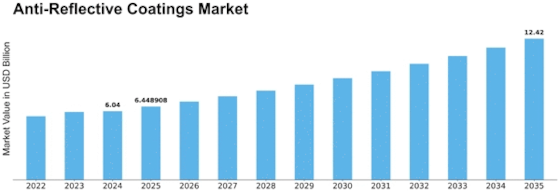

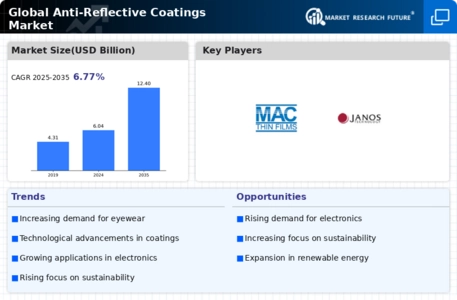


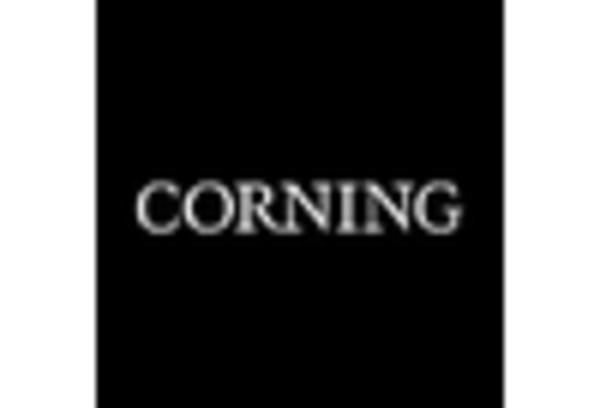

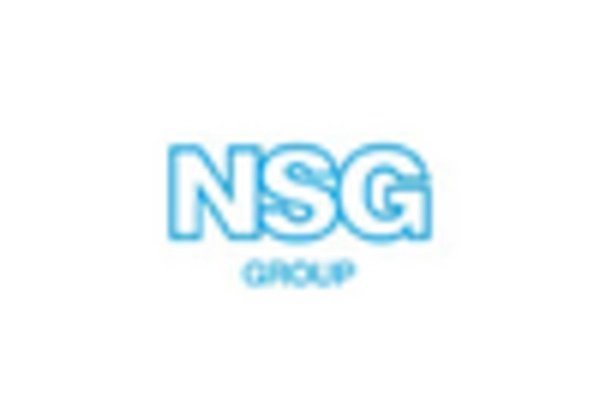
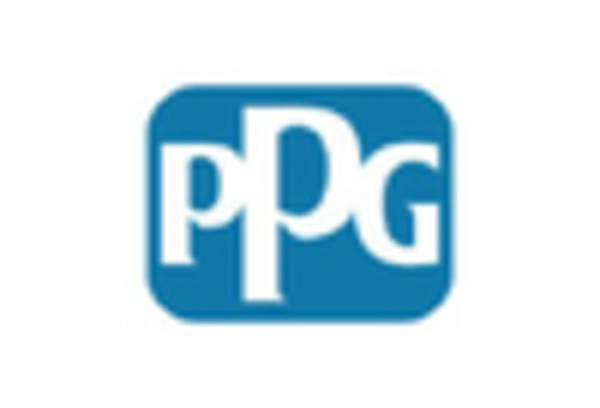


Leave a Comment